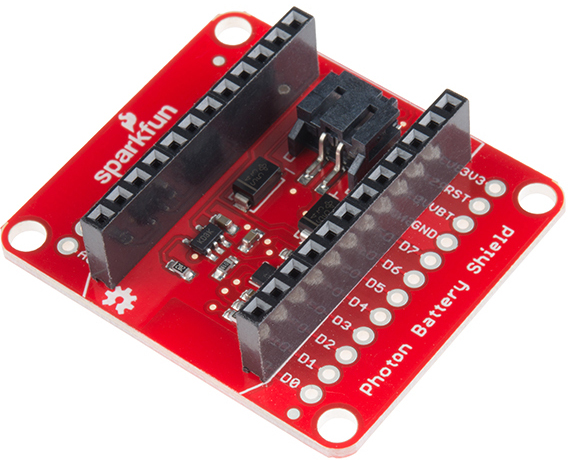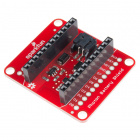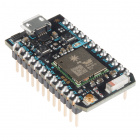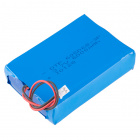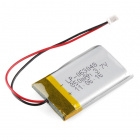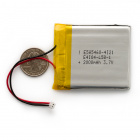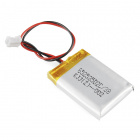Photon Battery Shield Hookup Guide
Introduction
Free your Photon from its USB cable by powering it through the Photon Battery Shield. The Battery Shield has everything your Photon needs to run off, charge, and monitor a LiPo battery.
The Shield features two unique IC's: an MCP73831 charge controller and a MAX17043 LiPo fuel gauge. With them, you'll be able to charge your battery through USB and monitor its voltage and state-of-charge.
Covered In This Tutorial
The purpose of this hookup guide is to familiarize you with the hardware and software of the Photon Battery Shield. It's split into the following sections:
- Battery Shield Overview -- A quick overview of the components and features of the Photon Battery Shield.
- Using and Charging a LiPo Battery -- Some tips and tricks for running off, and charging a LiPo battery with the Shield.
- Using the MAX17043 LiPo Fuel Gauge -- Example code -- including a Particle library -- demonstrating how to read the voltage and state-of-charge outputs, plus other features of the MAX17043 IC.
Required Materials
The Photon Battery Shield equips your Photon with just about everything it should need to use a LiPo battery -- it even includes headers! Of course you'll need the Battery Shield and a Photon.
SparkFun Photon Battery Shield
DEV-13626Particle Photon (Headers)
WRL-13774The one thing the Battery Shield doesn't include is a battery. Our compatible LiPo batteries come in a variety of shapes and capacities -- the larger the battery, the longer it will last. Any of the following will work:
Lithium Ion Battery - 850mAh
PRT-00341Lithium Ion Battery - 2000mAh
PRT-08483Polymer Lithium Ion Battery - 400mAh
PRT-10718If you want to use a battery of your own, just make sure it's a single-cell (3.7V nominal, ~4.2V max) lithium-polymer (LiPo) or lithium-ion (Li+). Optimally, choose one that is terminated with a 2-pin PH-series JST connector, otherwise you may need to do some wire splicing.
If you don't already have one (or just want to stock up), you may also need a Micro-B USB Cable, which will come in handy when you need to recharge the battery. If you don't want to plug that cable into a computer, a USB Wall Charger is useful to have on hand.
Suggested Reading
Using the Photon Battery Shield doesn't require a whole lot of pre-existing knowledge. If you want to learn more about the foundational concepts in this tutorial, here are some guides we recommend:
- How to Power a Project -- Hopefully you've already figured this out, since you're reading a Battery Shield tutorial. This tutorial does have an enlightening section on battery power.
- Battery Technologies -- Specifically, check out the section on Lithium Polymer batteries.
- How Lithium Polymer Batteries are Made -- Learn everything you always wanted to know about what goes on behind the scenes at a battery factory.
- I2C Communication -- I2C is a popular low-level, two-wire communication standard. This is what we'll use to communicate with the MAX17043 fuel gauge IC.
